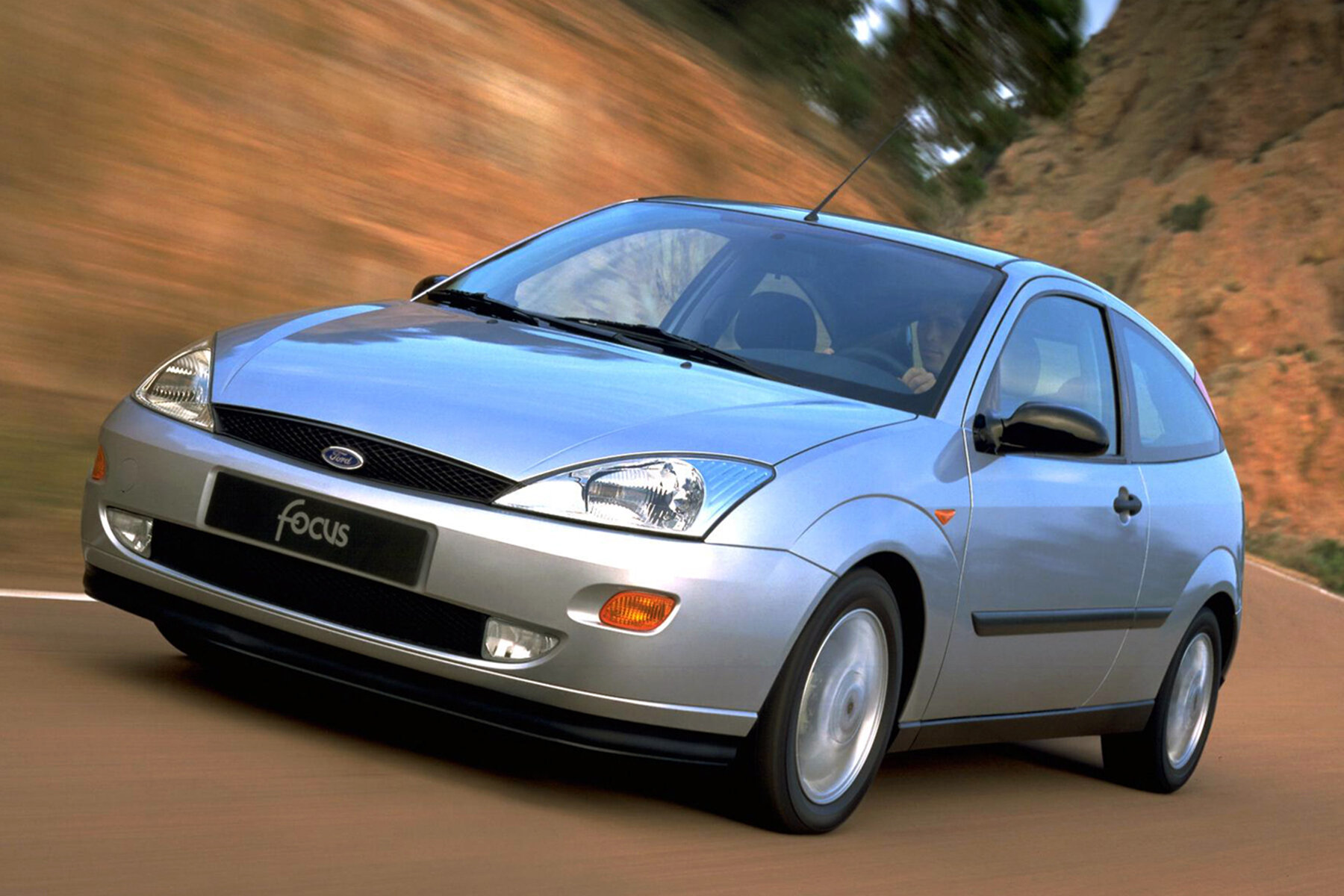
Every Monday we’re serving you up a delicious slice of pure postulation. That’s right, once a week we’re using our expertise and passion for the subject to predict what motors are destined for classic car stardom. This week, Parkers finance editor and former Classic Car Weekly news editor, Murray Scullion proposes the Ford Focus.
It’s one of the most important cars in the history of the automobile. It might not be quite as salient as its cousin, the Model T, but the ravages of time have had a good chew through the likes of the Model T, Volkswagen Beetle, and Jaguar E-type and have spat them out as god-like.
The Ford Focus hasn’t been masticated by the gods yet. But we reckon when it is, it’ll be gobbed out with ‘legend’ on the side of it.
Ford Focus – history
The birth of the Focus was ultimately needed because of the death of the Escort. The Escort MkV was a disaster for Ford. According to the Ford Focus designer, Richard Parry-Jones, ‘I’d worked for Ford for 20 years and for most of that time, the company was really good at selling to fleets, and didn’t really sell to retail buyers – hence the focus on costs. As such, there wasn’t much about it the user actually wanted.’ Lacklustre doesn’t even begin to cut it.
The Focus was launched in 1998 (although the Escort soldiered on until 2000) to great fanfare. The motoring press fell in love with it, celebrated its Control Blade rear suspension, ample room, how comfortable it was, and how enjoyable it was to drive. It even went on to win awards on both sides of the pond.
From the off the Focus was available with 1.4-litre, 1.6-litre, 1.8-litre, and 2.0-litre petrol engines, as well as a 1.8-litre diesel. Saloon and estate models were made available too. Predictably, after three years on sale, a black special edition was launched in order to zhush the lineup. It had Panther black paint, black leather seats, and the 1.6-litre engine.
Even more predictably, the Focus received a minor facelift in February 2000. Minor trim level upgrades were introduced, while the next month, the ST170 was released. It used Ford’s 2.0-litre engine, but it was beefed up to 170bhp - hence the name. October 2002 saw the biggest change to the MK1 Focus’ lineup - the introduction of the RS. Its 2.0-litre engine pumped more than 200bhp - and it’s earned a space among Ford’s most iconic fast cars.
By 2004 the MK1 Focus was replaced - sealing the car’s fate as one of the greats.
Ford Focus rarity

Ah yes, rarity. A hallmark of classic, and future classic cars. Admittedly, the Focus was such a brilliant car, people couldn’t stop buying them. The Focus entered the list of bestselling cars of 1998 and didn’t dip out until recently. Even during its last year on sale, Ford shifted more than 130,000 of them in the UK alone.
What we’re angling at here is that the Ford Focus isn’t all that rare. But we bet you knew that. Rust (more on that later) has sent thousands of them to the crusher, but there are thousands more left out on the road. Fast models like the ST170 and RS were made and sold in fewer numbers, so they’re the ones to go for if you value rarity. Look out for estates and saloons too - neither of which sold as well as the hatchback.
Watch out for special editions too like the Black Edition - howmanyleft reckons only around less than 1150 are on the roads now.
Why should you care?
The Focus took everyone by surprise with quite how complete it was. The press, and the public, were outstanded with its mix of driving ability and affordability, mixed into a package that families could use. It made other car companies take note. The goalposts had moved. Even premium manufacturers with price tags some £10,000 higher couldn’t offer the same combination.
And best of all, not only are you buying a car that was revered when it was new - but you’ll be buying one that’s stood the test of time. As a secondhand buy it’s cheap as chips, reliable, and comfy.
Saying that, it’s not all rosy. Early models are now 22 years old so they’re bound to have the problems associated with cars of that age. Rust in particular is a huge problem. Look out for rot in the wheelarches, door bottoms, and boots. Other known issues, in no particular order, include unreliable coil packs, alternators, oil filler caps, and alternators.
The CCfS Classic Car Prediction
Different models of the same cars become classics sooner than others. Despite the Mk1 Focus RS being the newest of the lot, we reckon these will become classics soonest. Prices are already on the rise - expect to pay around £15,000. We’d even go as far as saying most regional non-stuffy classic car events (the one not frequented by pink chino wearers) would allow an RS in now.
Lesser Focus’ are a harder sell, but are a lot cheaper. Expect to pay £500 for high mileage, low spec cars. £1000 will bag you an ST170.
While some Ford-specific classic events will admit ST170s now, we predict that regular Focus’ will take a bit longer to be accepted. Although we’d eat our hat if early, mint-condition, low mileage models (even lowly LX models) weren’t accepted at classic events in the next five years.
